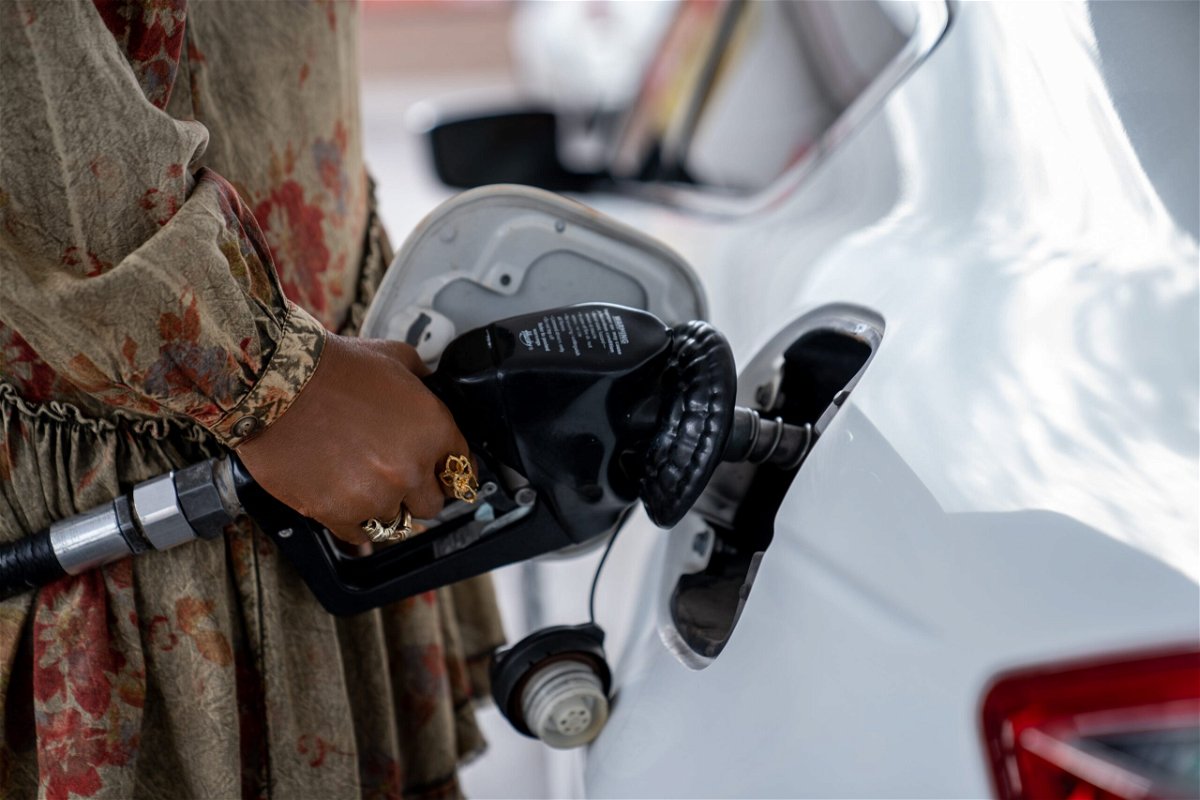Don’t look now but gas prices are rising fast

By Matt Egan, CNN
New York (CNN) — You’re not imagining it: Gasoline prices are moving swiftly higher across the country.
The national average has climbed 11 cents in the past week alone, to $3.28 a gallon, according to AAA. That means millions of Americans hitting the roads this Presidents’ Day weekend will be greeted by the highest prices in nearly three months.
Some of this jump in pump prices is normal. Gas prices always rise as winter winds down because demand increases and gas stations must switch over to more expensive summer fuel.
Some of this jump is abnormal. Refinery outages — including a weekslong shutdown of the largest refinery in the Midwest — are limiting the supply of gas.
No matter the cause, rising gas prices are bad news for consumers already frustrated by the cost of living.
And this trend could cause headaches for officials in Washington — especially if it accelerates. Higher gas prices complicate the Federal Reserve’s war on inflation. And they undercut the election year message of a White House that previously pointed to cheap gas prices as evidence that Bidenomics is working.
The higher prices go, the bigger the headaches.
“It’s a very sensitive subject for Americans,” said Patrick De Haan, head of petroleum analysis at GasBuddy. “The White House is somewhat powerless. The president doesn’t really deserve credit or blame. The market will do what it’s going to do.”
Why gas prices rise as winter ends
Gas prices bottomed at $3.07 a gallon nationally on January 15. Since then, the national average has increased by 21 cents to $3.28 on Friday.
So far, this is well within what’s considered normal. De Haan said that over the past decade, gas prices have increased by between 35 and 85 cents a gallon between the winter low and the spring-summer peak.
This happens for good reasons.
First, oil prices — the main driver of retail gas prices — tend to increase during this time of the year. That’s true again now. US crude has increased by about $10 since mid-December, to $78 a barrel today.
Investors know that demand for fuel increases as people drive more often and take road trips in warmer weather.
“January and February are the lowest gas demand months,” said Andy Lipow, president of consulting firm Lipow Oil Associates. “We are moving into higher demand months. That should be no surprise. It’s been this way for 50 years.”
Another annual tradition: Gas stations switch over to more expensive summer blends of fuel. That transition has already happened in Southern California — a switch that can add about 30 cents a gallon to gas prices.
Refinery troubles
At the same time, refineries often shut down for regularly scheduled maintenance late in the winter and early in the spring. Those shutdowns limit how much oil the refinery system can turn into gasoline, jet fuel and diesel.
What’s complicated matters this winter is there have been some unscheduled refinery outages.
Most notably, BP’s Whiting refinery in northwest Indiana has been shut down for weeks. That’s a big deal because this refinery is not just BP’s largest in the world, it’s the biggest in the Midwest. BP says Whiting can produce enough gasoline each day to support the average daily travel of 7 million cars.
It’s no coincidence then, that states in the Midwest have experienced the biggest price spikes.
Over the past month, gas prices have surged by 47 cents in Ohio, 40 cents in Indiana and 36 cents in Illinois, according to AAA.
Refinery outages in the Rocky Mountain region — which includes Colorado, Utah, Arizona and New Mexico — have also helped drive up the price of gas there. In the past week, gas has risen by 26 cents in New Mexico and by 21 cents in Colorado, according to the driving club.
A series of refinery closures in recent decades has made the country more vulnerable to unexpected outages — including those caused by extreme weather. For instance, without the usual backstop, last summer’s historic heatwave that knocked some refineries offline unexpectedly lifted gas prices across the country.
It’s worth noting that while gas prices have gone up sharply in recent weeks, it’s cheaper to fill up than it was a year ago. The national average for regular gas stood at $3.42 a gallon at this point last year.
How high will they go?
Looking ahead, experts are confident gas prices will continue to rise — but likely at a slower pace.
As long as there are no major surprises, Lipow expects the national average will peak at between $3.50 and $3.75 a gallon this summer. That’s a far cry from the unprecedented spike above $5 a gallon in June 2022.
“There is more than adequate crude oil supply — unless we get a major disruption due to tensions spreading throughout the Middle East,” Lipow said.
If the Israel-Hamas war spreads and derails supply from Iran and Saudi Arabia, prices would likely spike.
GasBuddy’s De Haan expects the national average will hit $3.50 a gallon by March or April. But he doesn’t see gas prices hitting $4 a gallon this year — unless something goes wrong.
“A refinery outage here or an Arab Spring there could cause prices to go up a lot more,” he said.
The-CNN-Wire
™ & © 2024 Cable News Network, Inc., a Warner Bros. Discovery Company. All rights reserved.